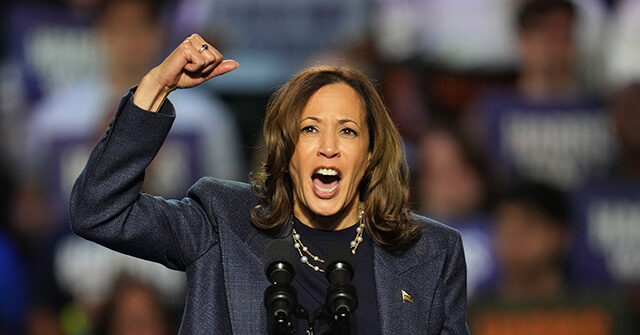Vice President Kamala Harris’s recent campaign rally in Scranton, Pennsylvania, provided a glimpse into the challenges of energizing supporters as she attempted to lead them in a chant to mobilize voters. In a slightly awkward moment, Harris elicited minimal response when she encouraged the crowd to chant, “Let’s get out the vote.” Although she successfully received enthusiastic chants of her name just moments prior, her attempt to shift the focus to voter mobilization did not resonate with her audience as intended. This moment captured the essence of the difficulties often faced by political figures in rallying support and perhaps underscored the need for strong engagement strategies as elections approach.
As Harris sought to rally enthusiasm, she raised her fist and reiterated the phrase “Let’s get out the vote” multiple times in hopes of igniting a collective response from her supporters. Despite her repeated efforts to encourage the crowd to join in, the chant fizzled out, leaving some attendees in the room confused about her persistence. This incident sheds light on the delicate balance required in political campaigning, where a leader’s energy and commitment can sometimes mismatch the audience’s mood or readiness to engage fully.
As the election draws near, the focus on voter mobilization becomes crucial. Harris’s day before Election Day itinerary included a series of events across Pennsylvania, indicating the importance of her presence in key locations to drum up support for the Democratic ticket. She planned to continue her campaign swing through Scranton, followed by rallies in Allentown, Pittsburgh, and Philadelphia, regions that have been historically significant in electoral outcomes. This strategic campaigning underscores the significance of certain locations in efforts to galvanize voter turnout as the political landscape becomes increasingly competitive.
In contrast to Harris’s schedule, former President Donald Trump was also amplifying his campaign efforts with multiple rallies throughout the day. His itinerary included stops in Raleigh, North Carolina, Reading, Pennsylvania, Pittsburgh, Pennsylvania, and Grand Rapids, Michigan. Trump’s aggressive campaigning approach indicates an escalating rivalry between the two parties as they vie for voters’ attention and support in still-pivotal states. His presence in key areas speaks to the dual strategies employed by both political figures, reflecting the considerable importance of election day events in maximizing voter turnout.
The dynamics of the political rally, characterized by Harris’s difficulties in rallying her supporters, mirror broader themes in political mobilization efforts. Enthusiasm and connection to the electorate are vital, yet they can be elusive, illustrating the unpredictable nature of public engagement. With voters’ attention often scattered across multiple channels—from social media to competing events—politicians must continuously adapt their messaging and tactics. The effectiveness of a candidate in mobilizing voters can heavily influence the outcomes of elections, making events such as these crucial.
In conclusion, the events in Scranton reveal not only the challenges that political figures like Kamala Harris face in energizing their supporters but also highlight the critical nature of voter mobilization as elections approach. As both Harris and Trump crisscross key states just ahead of the critical election, their efforts to inspire and motivate their bases will play a significant role in determining the outcomes. The intricacies of political engagement at rallies, the resonance of messaging, and the ability to galvanize supporters will undoubtedly remain central themes in the lead-up to Election Day. Through moments both successful and awkward, the dual narratives of these candidates reflect the intensity of modern political campaigns and the relentless pursuit of electoral victory.

